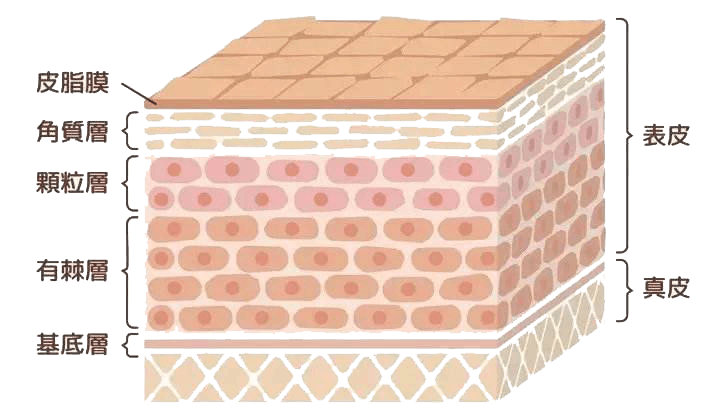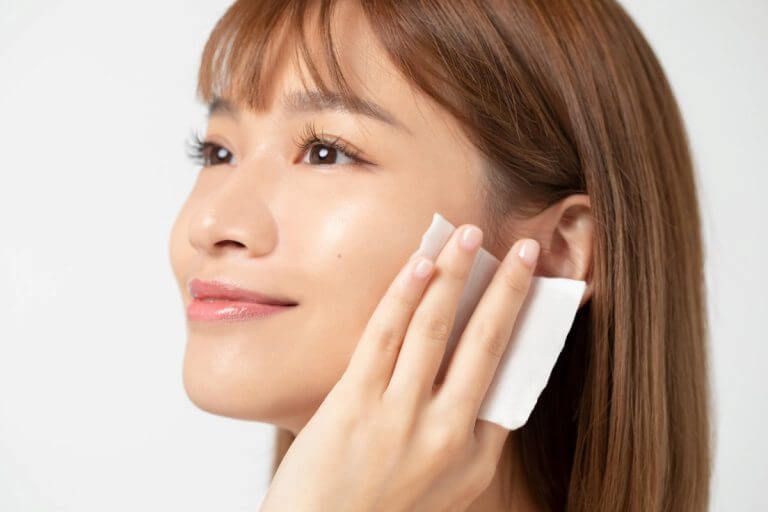- Home
- Trend
- Weight Loss Strategies
- Acne Tips
- Hair Health Information
- Blemish Removal Tips
- Acne Scar Removal Tips
- Muscle Building Techniques
- Intimate Care Tips
- Postpartum Intimate Care
- Eye Bags Wiki
- Tips for Face Slimming
- Secret of Permanent Hair Removal
- Breast Enlargement Tips
- Cure to Snoring
- Marionette Lines
- Skin-Tightening Secrets
The term “exfoliation” is no stranger to beauty lovers—especially women—since it can brighten and clarify the skin, making it a popular practice in the skincare world. With a wide variety of exfoliating products on the market—ranging from gels, scrubs, to AHA peels—there’s something for every skin type. However, many people wrongly assume that the more they exfoliate, the better. That’s a dangerous misconception. This article will walk you through what exfoliation really is, why it’s important, the right way to do it, and common misunderstandings. We’ll also share a super gentle exfoliation method at the end. If you’re curious to learn more, keep reading!
Exfoliation Basics: Understanding the Structure of the Stratum Corneum

Exfoliation is about removing dead cells from the outermost layer of skin, but do you know what the stratum corneum is, or what its function is?
Simply put, the skin is divided into the epidermis and dermis. The epidermis is the skin’s outer layer, which can be further divided into the stratum corneum and basal layer. The stratum corneum, our main focus today, is made up of dead keratinized cells containing keratin proteins. These play an important role in retaining moisture and protecting the skin from environmental irritants and potential infection.
Under normal conditions, the stratum corneum has a turnover cycle of 28 days. However, this cycle slows with age and lifestyle changes. Fast-paced city life, irregular meals, and insufficient rest can all disrupt skin cell turnover, making it difficult for old keratin to shed naturally.
What Does Exfoliation Really Mean?

That’s why regular exfoliation is necessary. It involves removing dead skin cells on the surface so that new cells underneath can rise and form a fresh stratum corneum, continuing the renewal process. As mentioned earlier, the skin's renewal slows with age and poor habits. When the skin can’t shed dead cells efficiently, they accumulate on the surface. Using exfoliants helps remove this build-up, revealing smoother, more radiant skin and an even complexion.
免費體驗
Acne Treatment
1 Minute Self-Registration
Date should not be before minimal date
Why Exfoliate? Benefits for Your Skin
Exfoliation is essential for busy Hongkongers. Due to poor lifestyle habits and stress, the skin's condition can become unstable and its renewal process slower. This causes old skin cells to pile up, resulting in dull, rough, and dehydrated skin. Here’s how exfoliating helps:
Benefit 1: Brightens Skin Tone
People often overlook cleansing in their skincare routine, but it’s a key foundation. Without thorough cleansing, even the best hydrating serums or creams won’t be effective. Daily makeup removal and face washing help remove dirt and oil, but to fully combat dull skin caused by dead skin build-up, enzyme-based cleansers can be especially effective in gently exfoliating and brightening the complexion.
Benefit 2: Maintains Skin Smoothness
Hong Kong’s hot climate and frequent makeup use burden the skin. Sun exposure causes the outer layer to thicken. Without regular exfoliation, the skin accumulates dead cells and becomes rough. It’s recommended to exfoliate during seasonal changes to help stabilize the skin.
Benefit 3: Enhances Skincare Absorption
Without regular exfoliation, the skin’s ability to absorb products diminishes. This means even expensive toners, serums, and moisturizers might not deliver results. To boost product absorption, exfoliating once a week is recommended.
Two Types of Exfoliation: Physical vs Chemical
There are two main exfoliation methods—physical and chemical—each with distinct mechanisms:
Method 1: Physical Exfoliation
This method uses granular particles (often from plants or minerals) to physically scrub away dead skin cells. Common products include scrubs, sea salt, cleansing brushes, and facial cleansing devices. While convenient, these can harm the skin if the grains are too large or sharp. Devices used improperly can cause inflammation or microtears. So always proceed with caution.
Method 2: Chemical Exfoliation
This involves acids or enzymes that soften and dissolve dead skin to promote natural turnover. Common ingredients include AHAs (glycolic acid, mandelic acid, lactic acid, malic acid, tartaric acid, citric acid), salicylic acid, urea, and proteolytic enzymes. While effective, it’s important to avoid high concentrations—especially with AHAs—as they can irritate or burn the skin.
The Proper Way to Exfoliate
No matter which method you use, proper technique is key. Exfoliation should be done after removing makeup and washing your face. Remember: exfoliants only remove dead skin—not makeup residue—so they can’t replace your regular cleansing routine.
Suggested Steps:
1. After cleansing, gently pat your face dry with a clean towel.
2. Apply exfoliant (e.g., scrub) starting with the T-zone and chin.
3. Using your middle and ring fingers, gently massage the product in circular motions over your face.
4. Pay extra attention to the nose, nostrils, and chin—massage lightly and let the product sit for two minutes.
5. Rinse thoroughly with lukewarm water, ensuring the hairline area is also clean.
6. Take advantage of your skin’s optimal absorption post-exfoliation by applying a hydrating mask to reinforce the skin barrier.
免費體驗
Acne Treatment
1 Minute Self-Registration
Date should not be before minimal date
Common Myths About Exfoliation
Many myths persist about exfoliation. Let’s clear up 5 of the most common:
Myth 1: The more residue you rub off, the more effective it is?
Wrong. It’s hard to tell if the residue is actually dead skin or just product particles. Many exfoliants contain polymers like PVA, which form clumps during application. These clumps may include product residue, dust, and other impurities—not just skin.
Myth 2: How often should I exfoliate per week?
While exfoliating helps improve skin clarity, overdoing it can strip healthy skin and weaken its natural barrier. This may cause dryness, redness, or even allergic reactions. Oily or acne-prone skin: up to twice a week. Dry skin: once a week.
Myth 3: Should your hands and face be dry before exfoliating?
It depends on the product. Most require dry hands and face to prevent dilution and ensure effectiveness. Always check the instructions.
Myth 4: Applying a mask after exfoliating boosts results?
Partly true. Exfoliation can improve ingredient absorption, but it also temporarily weakens the skin barrier. If masking afterward, use gentle, hydrating masks only—and don’t exfoliate before every mask session.
Myth 5: Does the body need exfoliation too?
Yes, but it varies by area. For example, elbows and feet naturally develop thicker skin. While footwear protects the soles, occasional exfoliation is still beneficial. As with the face, don’t overdo it—stop if you feel discomfort.
Scalp: Wet hair first, apply scalp exfoliating gel, massage for 3–5 minutes, rinse, then shampoo as usual (1–2 times/week). Body: In the shower, dampen skin, apply product and massage gently, especially on rough areas like knees and elbows. Rinse and apply lotion. Feet: Wet feet, massage in exfoliating cream, rinse thoroughly.
Exfoliation for Sensitive Skin? Try Perfect Medical's Acne Treatment!
If you have sensitive skin, Perfect Medical’s Acne Treatment is a top choice! It suits all skin types, is non-invasive and drug-free, and won’t harm your skin—plus, it prevents future breakouts.
This treatment uses a dual-suction technology with vacuum dermabrasion and a deep-cleansing serum. One channel gently removes dead cells and residue using vacuum exfoliation; the other delivers medical-grade essences deep into the skin, triggering collagen regeneration, deep hydration, anti-inflammatory effects, and pore-clearing. This helps dissolve whiteheads and blackheads, improve congestion, and reduce acne.
If you want a one-stop solution for acne, congestion, and exfoliation, Perfect Medical’s Acne Treatment is now offering a limited-time free trial with simple online registration. Don’t miss out!
Free Trial: Perfect Medical Acne Treatment免費體驗
Acne Treatment
1 Minute Self-Registration
Date should not be before minimal date
FAQ

What is the stratum corneum, and what is exfoliation?
It’s the outermost layer of the epidermis, made up of dead cells rich in keratin, which helps retain moisture and protect the skin. Exfoliation is the process of clearing these dead cells to allow for new ones to form.
Do more visible flakes mean better exfoliation?
No. The flakes could be from the product itself or environmental dust, not just dead skin.
How long until I see results from Perfect Medical’s Acne Treatment?
Just one session is enough to see noticeable acne improvements, thanks to its dual-action vacuum technology and medical-grade infusion.









